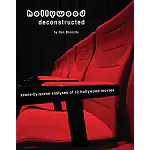To help you understand story pacing and how to write a script that keeps the reader turning the page it may help to think of your screenplay as a piece of music. The music can be in any genre since most pop and rock songs share the same constant as is apparent in classical pieces – they all have a melodic rhythm with highs and lows. If they didn’t then essentially it would not really be called “music” but “noise”.
Let’s first consider a pop song. Some start out loud and fast with an intro that reflects the chorus or the actual chorus itself and then dips to begin the first verse which is normally slower. After this comes the bridge which steps up the pace a little leading us into the chorus.. and then this repeats until the end of the song. About three-quarters of the way through there is normally the middle-8 section which is different from the verse, bridge and chorus in rhythm and melody and this helps break up the pattern before the last chorus.
All of these different sections of a typical song create pace, fast and slow, slow and fast and this pacing keeps us engaged. Let’s not forget, a song is more than music, it’s a story in itself, whether it has words or it doesn’t have words. Even classical music tells a story through the choice of instruments used, the melody and the arrangement. That’s why it’s so natural to compare musical rhythm and pacing with script writing because they share the same core principles.
Another great analogy is the roller-coaster ride which also applies to movie making and screenplay writing. A roller-coaster also goes up and down. Trust me, you wouldn’t go back to Six Flags theme park if all of the rides literally went from A to B on the same level at the same speed – would you? No, they good rides create tension, anticipation and excitement through the design of the twists and turns, where they are positioned, the acceleration and deceleration, and the slow climb followed by the dip. All of these ingredients combine to create “entertainment” for the participant and as a script reader or audience member you want to experience the same thrills when reading a script or watching a movie.
Remember, it’s your job as a screenwriter to keep the reader turning the page. You have to build toward those key moments of heightened action or drama in your story and then follow them with a lull that becomes the beginning of the next big crescendo. By visualizing your narrative in this way you will ensure that your script stands out and provides a roller-coaster read! And if you want to analyze the pacing of your own creative writing projects, I recommend our screenwriting software Script Studio® which includes a unique and innovative story pacing feature called FeelFactors.




